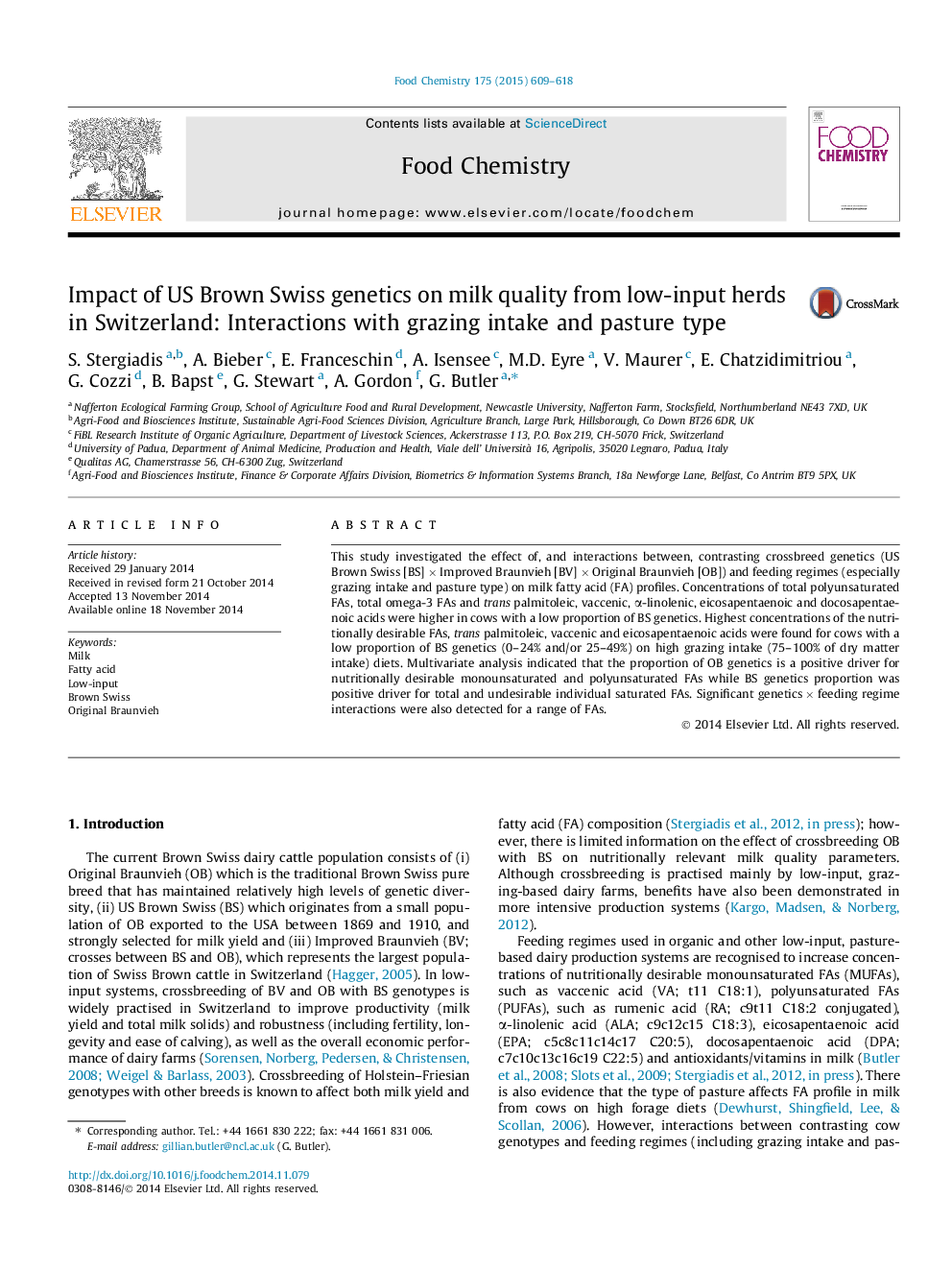| Article ID | Journal | Published Year | Pages | File Type |
|---|---|---|---|---|
| 7593838 | Food Chemistry | 2015 | 10 Pages |
Abstract
This study investigated the effect of, and interactions between, contrasting crossbreed genetics (US Brown Swiss [BS] Ã Improved Braunvieh [BV] Ã Original Braunvieh [OB]) and feeding regimes (especially grazing intake and pasture type) on milk fatty acid (FA) profiles. Concentrations of total polyunsaturated FAs, total omega-3 FAs and trans palmitoleic, vaccenic, α-linolenic, eicosapentaenoic and docosapentaenoic acids were higher in cows with a low proportion of BS genetics. Highest concentrations of the nutritionally desirable FAs, trans palmitoleic, vaccenic and eicosapentaenoic acids were found for cows with a low proportion of BS genetics (0-24% and/or 25-49%) on high grazing intake (75-100% of dry matter intake) diets. Multivariate analysis indicated that the proportion of OB genetics is a positive driver for nutritionally desirable monounsaturated and polyunsaturated FAs while BS genetics proportion was positive driver for total and undesirable individual saturated FAs. Significant genetics Ã feeding regime interactions were also detected for a range of FAs.
Keywords
Related Topics
Physical Sciences and Engineering
Chemistry
Analytical Chemistry
Authors
S. Stergiadis, A. Bieber, E. Franceschin, A. Isensee, M.D. Eyre, V. Maurer, E. Chatzidimitriou, G. Cozzi, B. Bapst, G. Stewart, A. Gordon, G. Butler,
